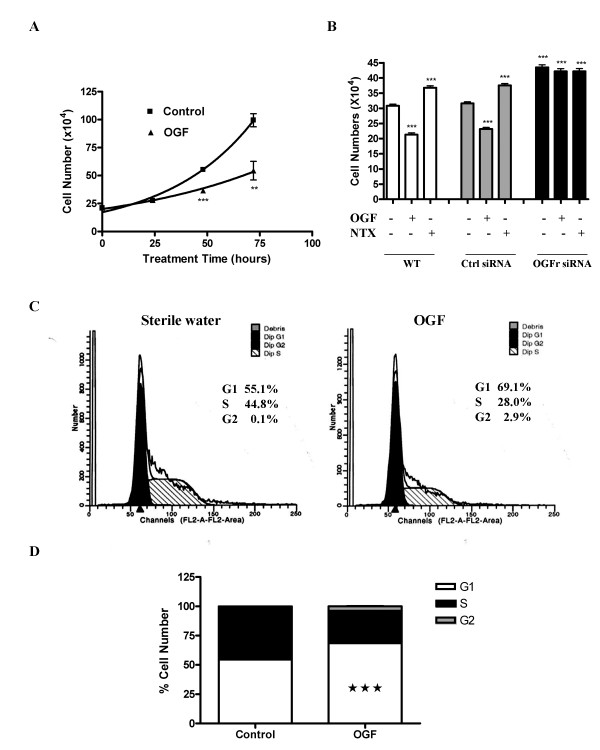Figure 1.
OGF inhibits BxPC-3 growth by arresting cells in G1. (A) BxPC-3 cells were grown in the presence of 10-6 M OGF for 72 hours, and counted after 24, 48, or 72 hours of treatment. The number of cells in OGF-treated cultures were significantly reduced from control cultures receiving sterile water at 48 (***p < 0.001) and 72 (**p < 0.01) hours. Cells grown in the presence of the long-acting and potent general opioid antagonist naltrexone (NTX), which blocks the OGF-OGFr axis, enhances cell proliferation. (B) OGFr is required for OGF action on growth. BxPC-3 cells were transfected with OGFr siRNAs or control siRNAs for 24 hours in the presence of 10-6 M OGF, 10-6 M NTX, or sterile water. Cells were harvested at 96 hours and counted with a hemacytometer. Data represent means ± SE for 2 independent experiments. Cell numbers differed from wt or Ctrl siRNA cultures treated with sterile water at p < 0.001 (***). (C) Flow cytometry of synchronized BxPC-3 cells subjected to sterile water (control) or OGF for 21 hours as determined by FACS analysis. (D) Mean percentage of cells in G1, S, and G2 phases. The percentage of OGF-treated cells in G1 was significantly elevated from control values at ***p < 0.001.

